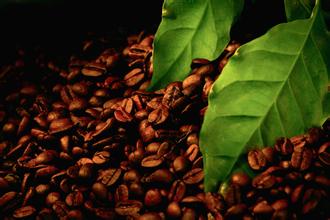The growth rate of South China market is as high as 30%-Kopi Luwak locates itself in the middle and high end market.
In addition, in order to meet more consumer demand and brand promotion, Kopi Luwak has not only pure high-end Kopi Luwak, but also medium-and low-end coffee with a selling price of about 20,30 yuan, and even instant coffee products. The ratio of high-end products to low-end products is 3:7.
At present, cafes are varied in China. Against this background, Zhu Danpeng believes that it is only natural that coffee chains such as Starbucks and Pacific are developing smoothly as a whole, and that Kopi Luwak has emerged as a new force. "Kopi Luwak is positioned at the middle and high end of the market, does better in details, and its consumers are also 'ashes', consumers who have high requirements for coffee," he analyzed. " At present, China has formed a dual consumption structure, and it is expected that Kopi Luwak's sales development and store expansion in 2016 should be relatively stable.
Finally, Zhu Danpeng also pointed out that the rise of Kopi Luwak in recent years has undoubtedly had a certain impact on other brands in the industry, but it will take time to bring about a subversive impact on the industry as a whole. Zhu Danpeng, a researcher at the China Food Business Research Institute, believes that China now consumes only 4 cups of coffee per person per year, while Beijing, Shanghai and Guangzhou consume only about 20 cups per person per year. In countries such as Japan and the UK, each person drinks an average of one cup of coffee a day. With the increase of the overall consumer population and the improvement of consumption level in China, China's coffee industry is expected to see faster growth in the next 10 years.
For all coffee giants, the Chinese market means a gold mine to be exploited. "Coffee is still a new face in China and remains to be developed." Wang Jingying, president of Starbucks Greater China, said that the Chinese market has now developed into the second largest market after the United States. Starbucks also revealed that Starbucks entered China in 1999 and now has more than 1900 stores and 30000 Starbucks partners in 99 cities in China.
As the so-called tree is good to enjoy the cool, as a latecomer to Starbucks, Costa and Pacific Coffee have a strong background. It is understood that Pacific Coffee was acquired by China Resources Entrepreneurship in 2010 for US $326 million, and Hualian is behind Costa, which makes it easy for them to have the market resource advantage that Starbucks and other brands envy.
The Chinese coffee market is in a hot war. Not only are Starbucks, Costa and Pacific Coffee expanding rapidly, but rising stars like Kopi Luwak are also increasing the pace of the Chinese market. It is understood that since the first Cat shit Cafe in 2011, the Kopi Luwak chain has spread to more than 30 cities in China, with a total of more than 110stores. Throughout 2015, we improved all the management systems, completed the construction of coffee roasting factories in mainland China, realized the local production of raw materials, further opened up the joining areas, improved the construction of logistics system and training system, and the brand entered a stage of rapid development.

Important Notice :
前街咖啡 FrontStreet Coffee has moved to new addredd:
FrontStreet Coffee Address: 315,Donghua East Road,GuangZhou
Tel:020 38364473
- Prev

Many brand coffee shops in Shenyang, Liaoning are closed to rent most coffee shops to seek transformation.
Mr. Li and his friends joined a brand coffee shop five years ago, and the store was chosen in Hunnan. Due to less competition in the industry, Mr. Li's store has been doing well, but in the past two years, there has also been a marked decline in business passenger flow. Mr. Li said that a few years ago, there were more business people, and they all handled large stored value cards at one time, and the cash flow of the cafe was in good operation.
- Next

Global coffee buyers seek direct deals with Kenyan farmers
Kenya is divided into seven provinces (Province) and one provincial district (Nairobi Province). The province is divided into districts (DISTRICT), townships (DIVISION) and villages (LOCATION). According to the new Constitution, the four-tier administrative structure will be changed to two levels, central and county (COUNTY). The 47 districts established under the new Constitution will be fully operational after the 2013 general elections. 7 provinces: Central Kenya
Related
- What ratio of water temperature and ground does the smart cup method use to press coffee? The difference between brewed coffee and filtered coffee?
- What is the standard process for the purpose of coffee cup testing? What is the difference between hand-brewed coffee and cup testing?
- How to use hand-brewed coffee paragon small golden balls? How does cold coffee lock in the aroma of coffee?
- Is American coffee black? What is the difference between American coffee and drip coffee?
- Unexpected! Well-known tea beverage brand Lele Tea will withdraw from the Zhengzhou market!
- Starbucks enters the fashion and beauty industry?! Netizen: Give me an ice American eye cream
- Why can American refills for free? The difference between Americano and American drip pot coffee
- Being chased out of the rain in front of Starbucks?! Store: Sheltering from rain under umbrellas poses a safety hazard
- The white moonlight has changed?! Lucky launches "Big Winter Pear American"
- Hand-brewed coffee three-stage method, high-sweet and universal brewing method to share! What does the high sweet water level of hand-brewed coffee mean?

